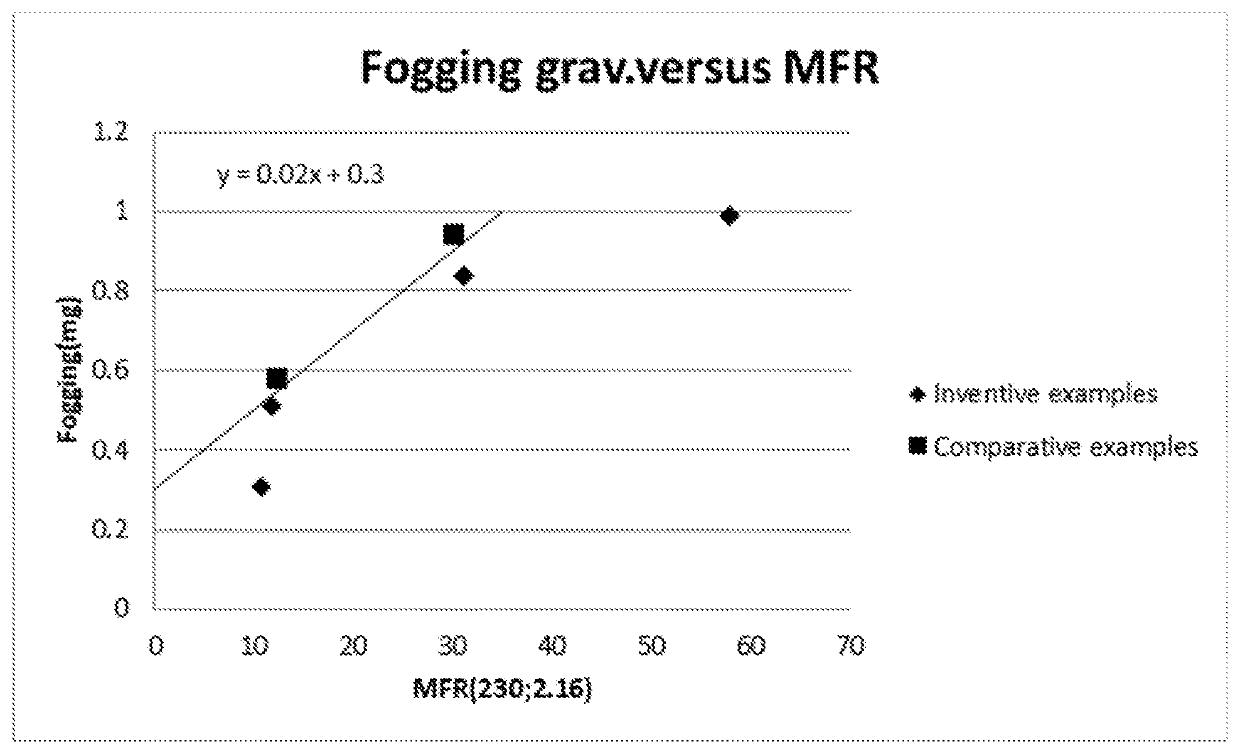Polypropylene compositions with low fogging
a polypropylene composition and fogging technology, applied in the field of polypropylene compositions, can solve the problems of poor impact resistance, difficulty in achieving demand, and only achieving the improvement of a specific property on the expense of another property, and achieve good impact/stiffness balance, good scratch resistance, and good scratch resistance
- Summary
- Abstract
- Description
- Claims
- Application Information
AI Technical Summary
Benefits of technology
Problems solved by technology
Method used
Image
Examples
examples
[0114]The following definitions of terms and determination methods apply for the above general description of the invention as well as to the below examples unless otherwise defined.
1. Measuring Methods
[0115]Xylene Cold Soluble fraction (XCS, wt %): The amount of the polymer soluble in xylene is determined at 25° C. according to ISO 16152; 5th edition; 2005-07-01.
[0116]Comonomer Content of the dispersed phase of the HECO by NMR spectroscopy: Quantitative nuclear-magnetic resonance (NMR) spectroscopy was further used to quantify the comonomer content and commoner sequence distribution of the polymers. Quantitative 13C{1H} NMR spectra were recorded in the solution-state using a Bruker Advance III 400 NMR spectrometer operating at 400.15 and 100.62 MHz for 1H and 13C respectively. All spectra were recorded using a 13C optimised 10 mm extended temperature probehead at 125° C. using nitrogen gas for all pneumatics. Approximately 200 mg of material was dissolved in 3 ml of 1,2-tetrachloro...
PUM
| Property | Measurement | Unit |
|---|---|---|
| melt flow rate MFRpp | aaaaa | aaaaa |
| wt % | aaaaa | aaaaa |
| density | aaaaa | aaaaa |
Abstract
Description
Claims
Application Information
 Login to View More
Login to View More - R&D
- Intellectual Property
- Life Sciences
- Materials
- Tech Scout
- Unparalleled Data Quality
- Higher Quality Content
- 60% Fewer Hallucinations
Browse by: Latest US Patents, China's latest patents, Technical Efficacy Thesaurus, Application Domain, Technology Topic, Popular Technical Reports.
© 2025 PatSnap. All rights reserved.Legal|Privacy policy|Modern Slavery Act Transparency Statement|Sitemap|About US| Contact US: help@patsnap.com

